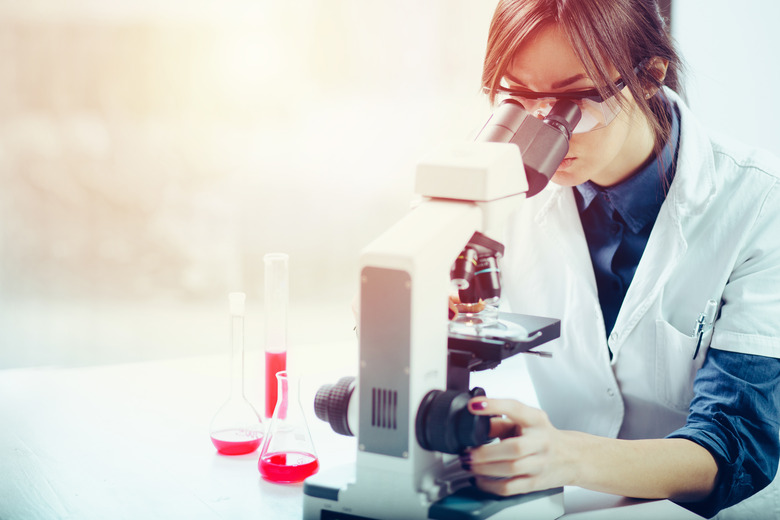Female Scientists Who Changed The World
Most everyone knows of Marie Curie's famous ground-breaking work in radioactivity that led to her receiving the Nobel Prize for physics, along with her husband and Henri Becquerel in the 1900s. But most don't know she won a second Nobel in 1911 by herself, or that she home-schooled her own daughters as a single parent after her husband died in 1906 while continuing to work on her science projects. And Marie Curie wasn't the first, and is certainly not the last female scientist to make significant scientific contributions to the world.
Women scientists around the world, with or without their husbands, have made significant contributions in the fields of science, technology, engineering and mathematics that have fundamentally changed the world we live in, yet most people know nothing about them. One main reason for this is because only about one-quarter of the jobs in STEM fields are held by women.
Women in STEM
Women in STEM
In 2017, the U.S. Department of Commerce reported that for 2015, women represented 47 percent of the workforce that year, but only worked in 24 percent of the jobs in STEM. About half of the college-educated workers in the nation are also women, but only 25 percent received training in science, technology, engineering or mathematics. An interesting fact the report noted was that even if women receive a STEM education, most end up working in education or healthcare.
Dr. Florence Seibert's TB Skin Test
Dr. Florence Seibert's TB Skin Test
If it weren't for biochemist Florence Barbara Seibert (1897-1991), we might not today have a tuberculosis skin test. She worked as a chemist during World War I, but after the war, she earned a Ph.D. from Yale University. While there, she researched certain bacteria that seemed capable of surviving distillation techniques only to end up polluting intravenous shots. It was in the 1930s during her stint as a professor at the University of Pennsylvania where her previous work led her to develop the TB skin reaction test. By 1942, she received the American Chemical Society's Francis P. Garvan Gold Medal for developing pure tuberculin, which made TB skin tests more reliable and possible.
First American Women Nobel Prize Winner
First American Women Nobel Prize Winner
Dr. Gerty Theresa Radnitz Cori became the first American woman to receive the Nobel for her work with glycogen, a byproduct of glucose. Her work with her husband Dr. Carl F. Cori and Dr. B. A. Houssay of Argentina involved how glycogen becomes lactic acid when it breaks down in muscle tissue and then becomes reconfigured in the body and stored as energy, now known as the Cori cycle.
Dr. Cori went on to receive many awards for her continuing research: the Midwest Award of the American Chemical Society in 1946, the St. Louis Award in 1948, Squibb award in endocrinology in 1947, and Garvan medal for women in chemistry in 1948, and the National Academy of Sciences sugar research prize in 1950. President Harry Truman appointed Dr. Cori to the board of the National Science Foundation in 1948, where she served two terms. Her work with her husband researching the metabolism of carbohydrates at the Washington University School of Medicine became a National Historic Chemical Landmark in 2004. Because of her work, doctors have a better understanding about how the body metabolizes foods.
Dr. Jennifer Doudna and CRISPR: The Gene Editing Tool
Dr. Jennifer Doudna and CRISPR: The
Gene Editing Tool
Literally on the cutting edge of science, Dr. Jennifer Doudna, a renowned professor currently teaching at the University of California, Berkeley, has also taught and held professorships at the University of Colorado and Yale University. She, along with her research partner, French microbiologist Emmanuelle Charpentier, discovered the gene-editing tool called CRISPR. Most of her work before CRISPR focused on the discovery of ribonucleic acid structure, along with DNA as nucleic acids – and lipids, proteins and carbohydrates – make up the four major macromolecules critical to all forms of known life on this planet.
Her work with CRISPR is full of known and yet unknown potentials. In the hands of ethical scientists CRISPR could literally remove previously incurable diseases from human DNA. However, many people have also raised ethical questions about its use in editing human DNA. Dr. Doudna, in an interview in "The Guardian," doesn't think scientists and doctors should use the CRISPR in a clinical setting right now – she called for a moratorium on its clinical use in 2015 – but does believe that the future holds possibilities, especially for those rare diseases and mutations occurring in children from families with genetic histories of some of these diseases.
References
- University of Houston: Marie Curie, Mother
- Michigan Tech University: Pierre and Marie Curie
- Smithsonian Insider: Five Pioneering Female Scientists You've Probably Never Heard Of
- Washington University School of Medicine: Gerty T. Cori (1896-1957)
- University of California Berkeley: Jennifer A. Doudna
- Guardian: Jennifer Doudna: 'I Have to be True to Who I Am as a Scientist'
Cite This Article
MLA
Brenner, Laurie. "Female Scientists Who Changed The World" sciencing.com, https://www.sciencing.com/female-scientists-who-changed-the-world-13711530/. 21 May 2018.
APA
Brenner, Laurie. (2018, May 21). Female Scientists Who Changed The World. sciencing.com. Retrieved from https://www.sciencing.com/female-scientists-who-changed-the-world-13711530/
Chicago
Brenner, Laurie. Female Scientists Who Changed The World last modified August 30, 2022. https://www.sciencing.com/female-scientists-who-changed-the-world-13711530/
